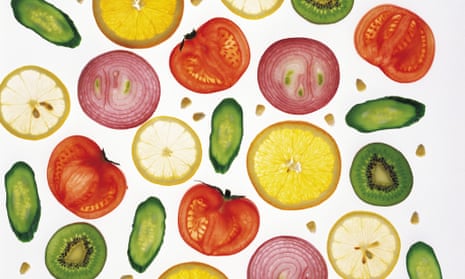There’s nothing flashy about fennel, or controversial about a carrot. Potatoes don’t re-market themselves every season to model a new coat of soil. Fruit and vegetables often get a boost of PR during healthful campaigns such as Meat Free Week, which kicks off on Monday, but now they’re beginning to star in their own advertising campaigns. Is this capitalism gone mad, or a last resort to improve the diets of the western world?
Partnership for a Healthier America, which was founded in conjunction with first lady Michelle Obama’s Let’s Move! campaign, has formed a coalition of non-profits, trade groups, celebrities and sports stars to create a new brand of fruit and vegetables - FNV. Working with agency Victors and Spoils, they’ve got stars such as Jessica Alba, Kristin Bell and NBA star Steven Curry on board.
During the XLIX Super Bowl, advertisements for fast food and cars shared the platform with the avocado. Why? Because Avocados from Mexico, a non-profit that co-ordinates the marketing activities for growers in Mexico, paid nearly $4m (£2.6m) to give the fruit 60 seconds of fame. Avocados are healthy and delicious, there’s no denying it; but is it slightly odd they are sharing the same mass marketing platform as Snickers and Victoria’s Secret?
Vhari Russell, founder of The Food Marketing Expert, believes campaigns to promote whole foods that grab consumers’ attention are “vital to change habits”. Creating a healthy brand kids want to be part of is a “great step forward” and could help turn the tide on obesity, he says. And FNV is fully embracing the marketing machine. Its website assuredly states: “Prepare to be marketed to.”
A 30-second advertisement at the Super Bowl costs $4m (£2.6m), and that’s not taking into account production costs. Few farmers have the budget to really sing home about the quality of their produce and compete with corporate giants such as KFC or Coca-Cola on the world stage. This means that, as far as popularity goes, junk food often wins.
Thankfully, small farmers won’t have to foot the bill for this one. There are nine partners supporting the campaign, including Avocados from Mexico, Produce for Better Health and Bolthouse Farms, which was behind the campaign to put baby carrot snack packs in vending machines.
Although a cynic may raise eyebrows at the idea of celebrities being involved in advertising campaigns for fresh fruit and vegetables, Russell thinks that personalities representing whole foods are important: “[It will encourage] children to engage with it. They don’t buy the shopping, but they buy via pester power. I also think many parents would find it hard not to agree to a healthy product in the supermarket if they were asked by their children.”
But does celebrity endorsement of fruit and vegetables make them just another branded commodity, dependent on mass media appeal instead of being able to stand alone? Or is this type of exposure helpful for small farmers and producers who might not otherwise be able to afford large-scale advertising?
Jo Arden is head of strategy at 23red, an agency that has worked on campaigns including Stoptober and Change4Life. She thinks that such campaigns are good for society: “If the food isn’t detrimental to health and there’s an economic benefit then it’s a good thing.” Arden adds that such advertising is especially useful where there are prevailing myths or misconceptions about the food, although she would prefer the focus to be kept on a varied and healthy diet, rather than communicating the benefits of one food alone.
Jason Hartley, chief strategy officer at The Partners, puts it more directly. “We accept that society gives Kim Kardashian money to promote Skechers, Glam Bandz, laser hair removal, nail polish … and you ask me if it’s OK for the first lady to promote avocados? Give me a break.”
Health aside, advertising whole foods can stem from a desire to turn around the failing fortunes of a product. When the Got Milk? advertising campaign started in 1993, California’s milk sales had been declining 3-4% annually. The campaign to transform milk into a “cool drink” was borne out of desperation to tempt people back to the white stuff after years of aggressive marketing by soda companies. Despite the campaign’s popularity, the money spent on it barely increased the number of people who drank milk.
Only time will tell whether FNV will end up being a similarly expensive but ultimately futile campaign. Either way, this is an opportunity for the world to see what happens when fruit and vegetables are put on the same mass marketing platform as junk food. Whether this gives people enough encouragement to reach for the cherries instead of the chocolate bar is a different question.
The sustainable living hub is funded by Unilever. All content is editorially independent except for pieces labelled brought to you by. Find out more here.
Join the community of sustainability professionals and experts. Become a GSB member to get more stories like this direct to your inbox.
